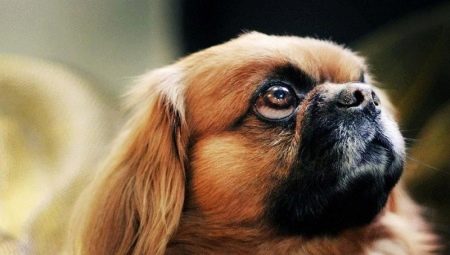When we hear about a dog breed such as Pekingese, most people immediately have pictures in their heads with these cute fluffy dogs with a flat nose and bulging eyes that are somewhat similar to plush toys.

What kind of breed?
This is a dog with a character who thinks that she is much bigger than she really is. Self-esteem is the middle name of the Pekingese. The vigilant nature of the dog makes him the best guard dog, and the size is suitable for a house of any size, from the apartment to the huge palace.
If a person wants to live with a dog that will manage his house, like an “iron paw,” then Pekingese is what you need. He is affectionate with family members, but independent to need constant attention. If we talk about strangers, then his attitude towards them varies from alienated to affable - it all depends on the particular dog.
Pekingese, which should weigh no more than 6 kg, likes to regularly walk around the park and play with toys indoors, but this breed is low in activity.
However, exercise is good for the dog, so you must ensure that he goes in for sports every day. Do not give in to the impulse to carry your pet everywhere in your arms and save him in any situation. He will be happy if the owner allows him to remain a dog, and he will behave much better.
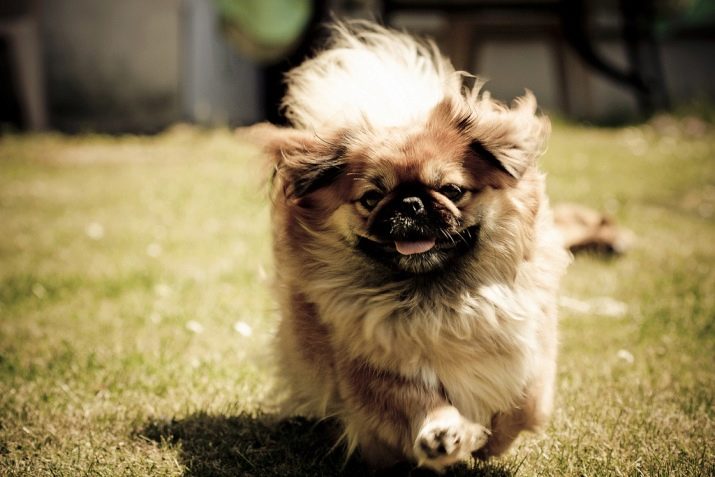
The bold but humorous nature of the Pekingese can make him an excellent companion in the family under the right circumstances. But it may not be suitable for families with small children.The Pekingese are small dogs and can be injured if they are too rude to play. They can even snap at the child if they are scared.
Pekingese are not breeds that are easy to train. They are stubborn and see no reason to follow any rules, at least those that they consider not important. This breed, as a rule, does what it wants.
However, there are Pekingese who successfully compete in trials of dexterity, speed, and obedience. These types of competitions can replace complex training and activities in general.
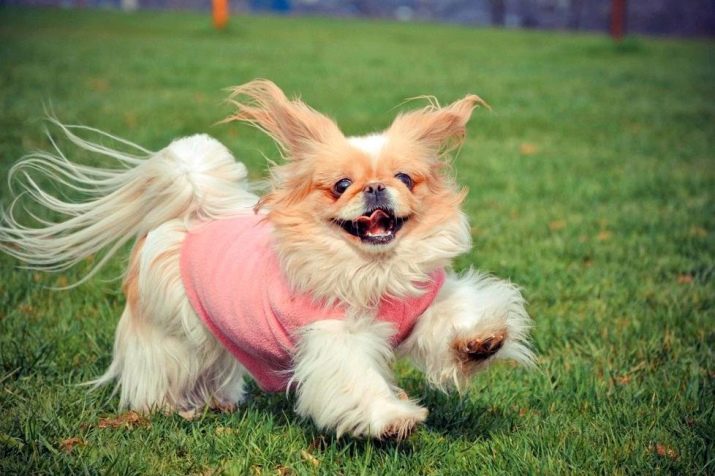
How many years live at home?
The average life expectancy of the Pekingese is 10 to 14 years maximum. Breed health problems may include the following troubles:
- brachycephalic upper respiratory tract syndrome;
- degenerative heart valve disease;
- dislocation of the patella;
- subdermatitis, diaper rash (fold of the face);
- pyloric stenosis (pyloric hypertrophy syndrome in adults);
- congenital elbow dysplasia;
- dysplasia of odontoid processes;
- intervertebral hernia of the perineum;
- intervertebral hernia;
- hydrocephalus;
- atlantoaxial subluxation;
- entropion;
- keratoconjunctivitis sikka ("dry eyes");
- corneal expression;
- proptosis;
- achondroplasia - genetic dwarfism, adopted as a breed standard;
- cryptorchidism;
- trichase;
- ulcerative keratitis.
Not all of these diseases are found in a growing puppy, and it is impossible to predict whether they will appear in the future.
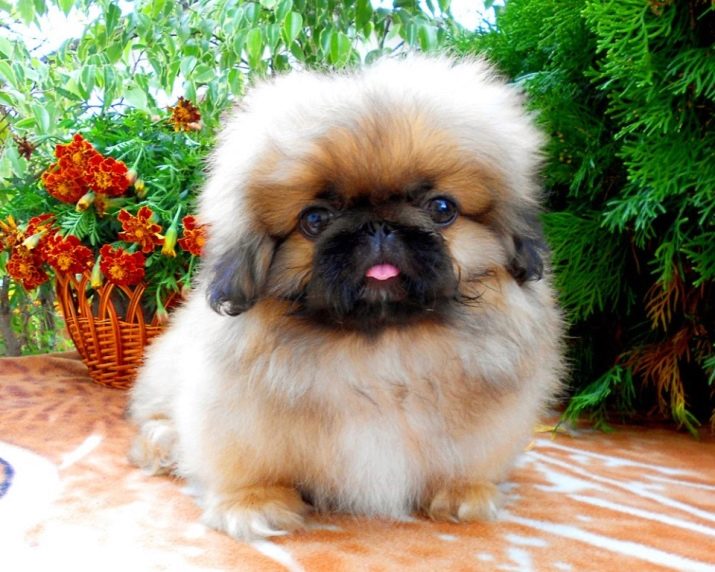
Factors affecting the lifespan
All dogs have the potential to develop genetic health problems - just like all people have the opportunity to inherit a specific disease. It is better not to take puppies from a breeder who does not guarantee that puppies are healthy. Cautious breeders check their dogs with a pedigree for the presence of genetic diseases and breed only the most healthy and beautiful individuals. But, even despite the excellent pedigree, the puppy can still develop diseases.
It is worth remembering that after the puppy has appeared in the house, you can protect him from one of the most common health problems - obesity.
Maintaining a Pekingese in normal weight is one of the easiest ways to extend the life of your pet. To do this, regularly inspect the veterinarian.
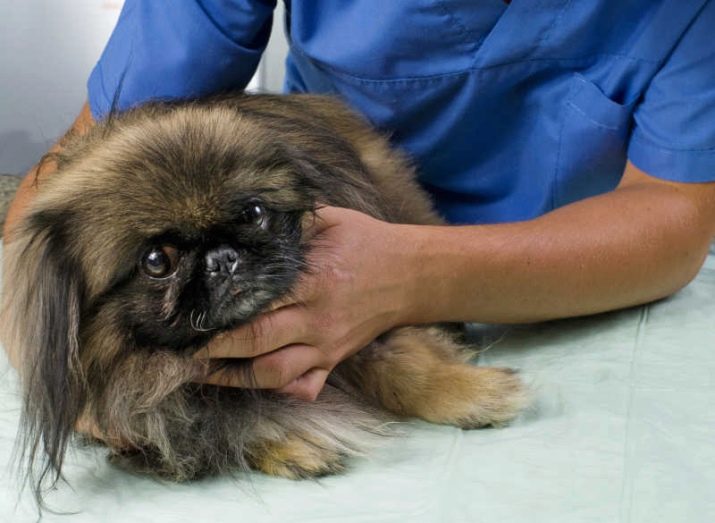
Temperament
To breed this breed of dogs began in the imperial palace of China. The Pekingese were highly valued and often presented to noble people. For this reason, this kind of royal majesty is still in their character. Some dogs consider themselves royal and expect their owners to treat them appropriately.
Modern Pekingese is different from its progenitors. This breed has slightly shorter legs today, and its face is flatter. This breed is incredibly stubborn, not aggressive and condescending. Nevertheless, such character traits as tenderness and playfulness, they will show only with their beloved owners.
Pekingese, whether it’s a boy or a girl, will enjoy walking with his master through a bustling city, that's just preferable to physical exertion for him will remain a soft and comfortable pillow.
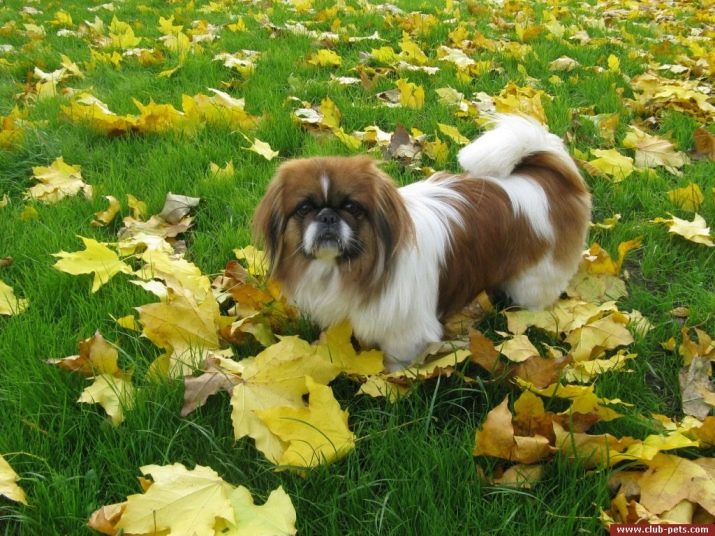
The Pekingese are great companions for older people who have time to devote all their attention to the dog. They adore the family in which they live, but fear strangers.
Pekingese will be happy living in a large house and in a small apartment, since they do not need a lot of activity to maintain health. They like to walk, proudly looking around, they like to play in the fresh air, but with age they become less playful.
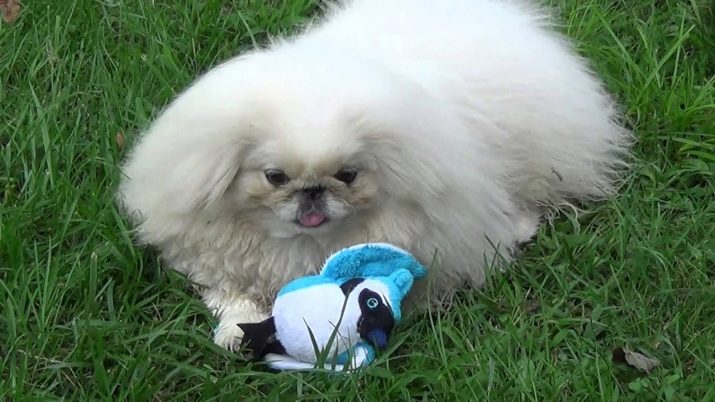
How to care?
The Pekingese has a long beautiful coat and a thick fluffy mane on the neck and shoulders, tassels of wool on the ends of the ears, tail and legs. Looking after this glamorous dog is not as difficult as it might seem. Regular care will help keep your coat healthy. A dog breeder is the best source of hair care advice, so feel free to ask questions to get valuable advice.
Pekingese coat must be cleaned daily, every other day or twice a week - it depends on the dog itself.
To do this, slightly dampen the wool with water or a special tool and walk with a brush, but it is better that such a brush be made of natural wool. You need to start combing from the head, slowly moving to the tail. Combing and removing excess hair promotes new growth.

If the Pekingese lives in an apartment or in a house, you can cut his fur to make it easier to care for him. Also possible regularly take your pet to a specialist who will trim the brushes of wool on the legs so that dust and dirt do not collect on them. The second option is to completely shave off the hair, leaving only the mane around the head and the pompom on the tip of the tail.
If it is not possible to take your dog to a specialist, you can do haircuts yourself. Over time, the owner may well learn to make beautiful and unusual haircuts professionally.
Claws should be trimmed as needed - usually this should be done every week or every two weeks. Ears need to be checked to make sure they are clean. If contamination occurs in the ears, a special cleaning agent recommended by the veterinarian should be used. Toy breeds such as Pekingese are susceptible to periodontal disease because they have many teeth. You need to brush your teeth with a toothpaste approved by a veterinarian for good health and fresh breath.
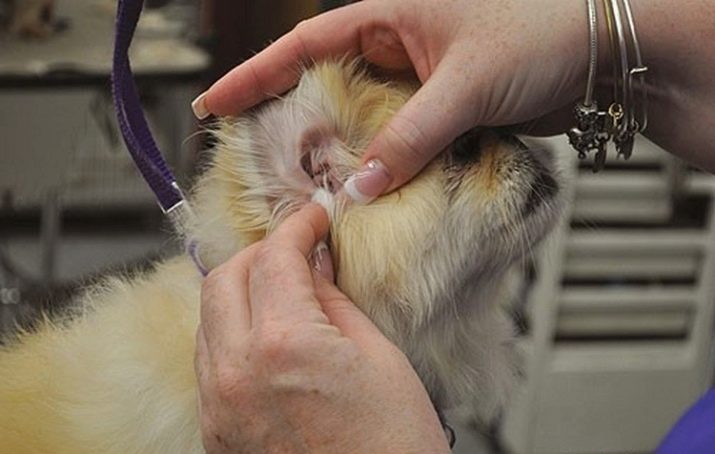
Behavioral factors
The Pekingese, as a rule, behaves well, but he is prone to barking. They will bark at people, animals, cars, and even at autumn foliage driven along the road by the wind. When they are left alone for a long time, their barking can get out of hand. People who work a lot are not recommended to start the Pekingese. They are more suitable for retirees, families who constantly have someone at home, or for those who work at home.
Pekingese is very independent, therefore you need to drive it more on a leash, and not drag it in a bag or on your hands - It is worth giving your pet an opportunity to communicate with the surrounding nature, people and other animals.
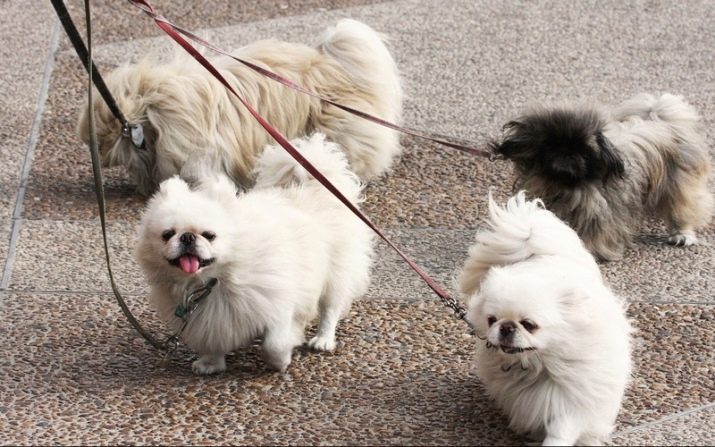
Look at the next video for the characteristics of the Pekingese dog breed.
